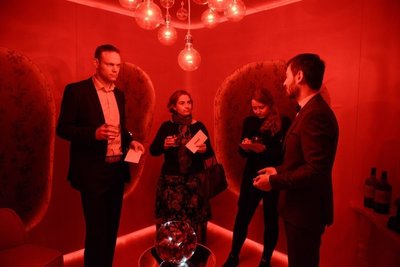Environment affects taste of whisky by up to 20%
Ever bought a bottle of wine that tasted incredible at the cellar door only to be disappointed when you try it at home? It’s not surprising: a change of environment can change how you perceive flavours. When drinking whisky, this effect can enhance the flavour by up to 20%, according to British researchers.
Researchers from Oxford University and ‘experiential sound design company’ Condiment Junkie tested more than 440 members of the public in what they claim is the world’s first multi-sensory bar, The Singleton Sensorium, in London’s Soho.

“The results signal that multi-sensory environments affect the nose, taste/flavour and aftertaste of whisky, despite the fact that participants were aware they were drinking exactly the same drink throughout the experiment,” said Professor Charles Spence, Head of Crossmodal Research in the Department of Experimental Psychology at the University of Oxford.
“Furthermore, results indicate that our feelings about the environment in which we happen to be tasting/drinking whisky impact on our feelings about the drink itself.
“What these results show is that even under realistic and noisy conditions, a change of environment can give rise to a very real 10-20% change in the experience of the whisky. Therefore, there is an opportunity here to create a multi-sensory environment around a great tasting product to enhance the drinker’s experience and enjoyment of drinking whisky.”
Participants entered three different rooms at the Singleton and noted the ways the sounds, smells and visuals in each room enhanced flavours in the Singleton of Dufftown single malt whisky. A green room featured a real turf floor, lawnmower sounds and birds tweeting, while a red room used curved shapes and the sound of bells ringing. The final room included sounds - double-bass notes, creaking wood and crackling wood fire - and scents - cedar wood and a live tree - to highlight the age and wood finish of the whisky.

The Singleton Sensorium is part of a wider scientific study, Tasting Notes: Assessing the effect of the multi-sensory atmosphere and ambiance on people’s perception of whisky, which is to be published in September 2013.
Professor Spence says the results will have implications for the way pubs, bars and restaurants are designed in the future.
A healthy diet helps the weighty battle with chronic pain
Research from the University of South Australia shows that adopting a healthy diet can reduce the...
Six plant-based foods with brain-boosting benefits
A new study by the University of Wollongong (UOW) has revealed why some plant-based foods have...
GNT Ventures seeks startups to shape food colour innovations
Plant-based food colour supplier EXBERRY has launched an independent investment firm which will...










